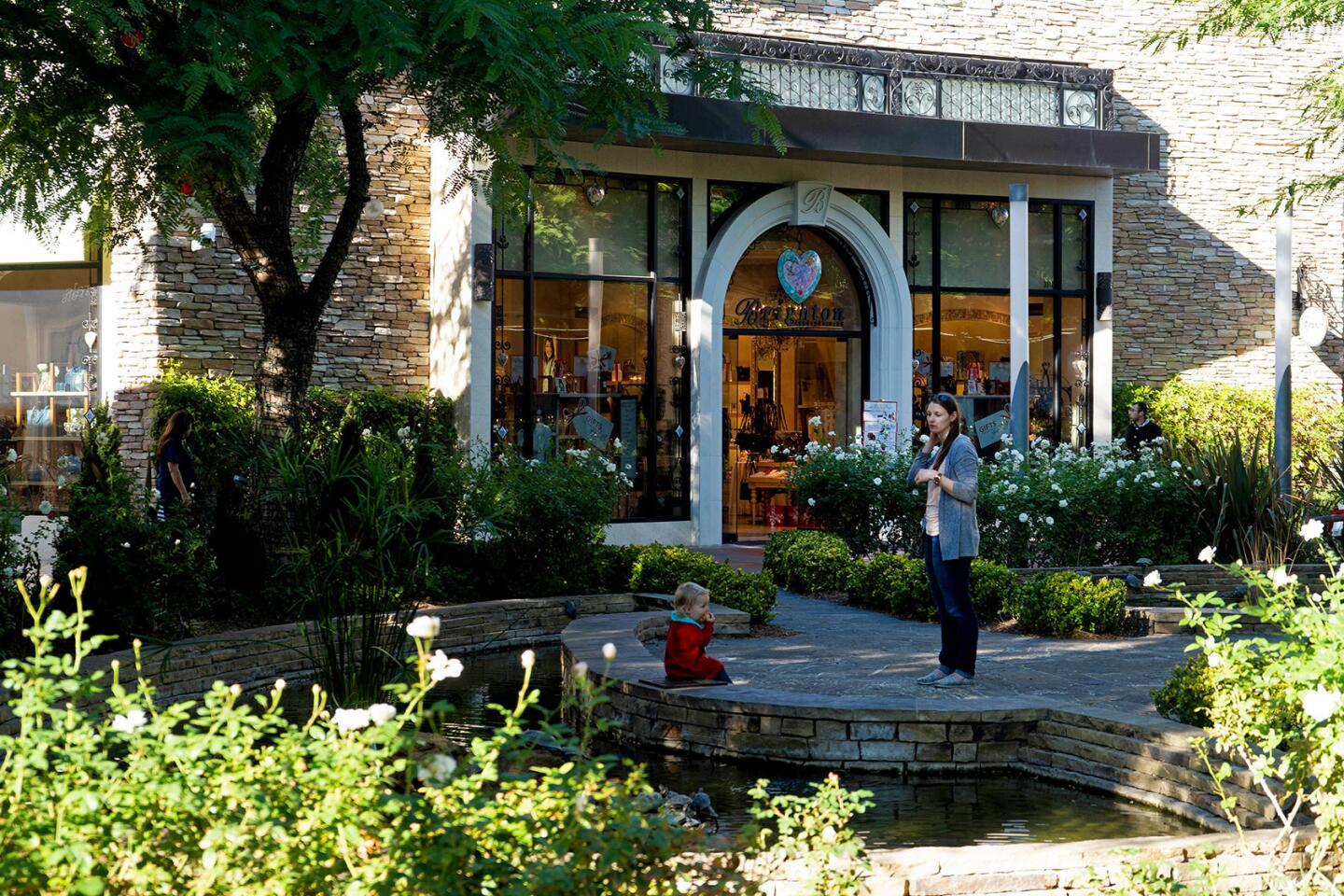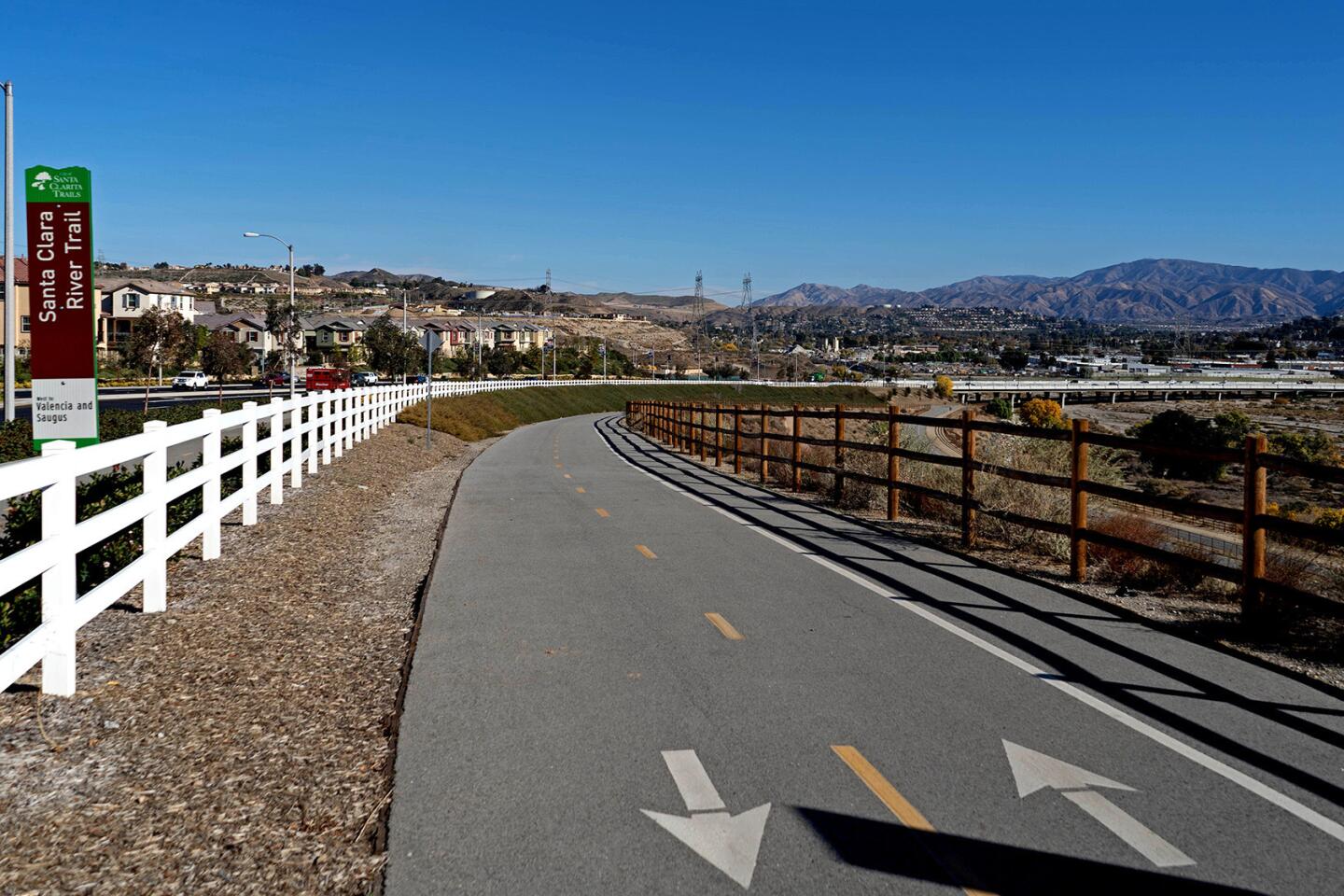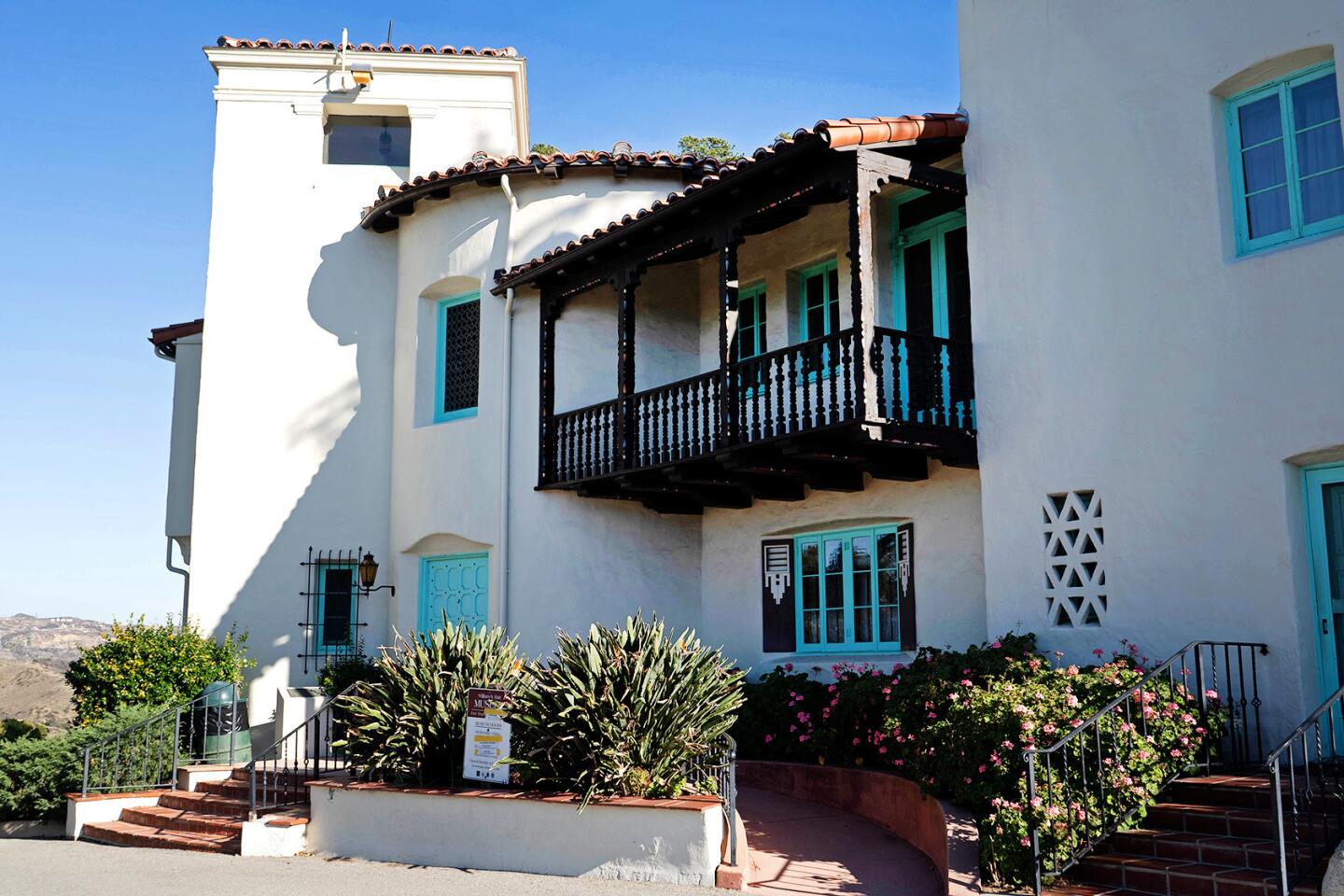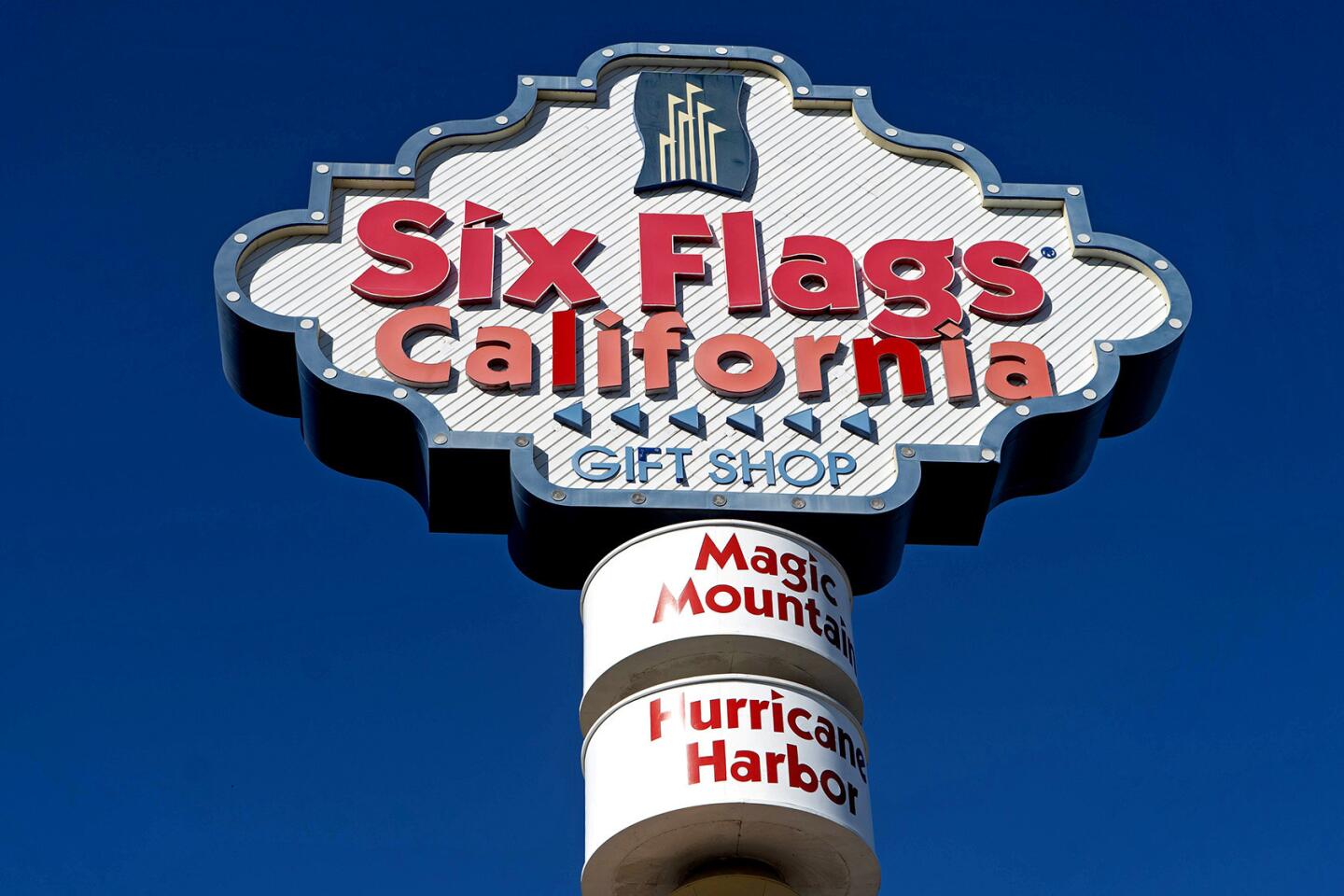Neighborhood Spotlight: Santa Clarita’s tidy streets spring from a colorful past
- Share via
Before it became a well-manicured suburb of Los Angeles, Santa Clarita had a long and colorful history — first as the putative birthplace of the California Gold Rush, then as a wild and woolly railroad settlement, and later as a popular filming location for westerns.
The valley where the city lies was first visited by Europeans in the summer of 1759, when the Portolà Expedition emerged from what would eventually be named the Newhall Pass onto a plain ringed by mountains and bisected by a dry riverbed. Father Juan Crespi, who was accompanying the expedition, originally named it the Santa Clara Valley, although over the years it became known as the Santa Clarita Valley.
Five years after the collapse of the Spanish mission system in 1834, Rancho San Francisco, which included the Santa Clarita Valley, was granted to a former Mexican soldier named Antonio del Valle.
In 1842, the sleepy outpost had its first brush with fame. In a nearby canyon a man named Francisco Lopez took a nap in the shade of an oak tree and dreamed of gold.
When he awoke, the legend claims, his dream became reality. While digging for a post-nap snack of wild onions, he unearthed gold and thereby launched the first gold rush in California.
By 1875, the rancho had fallen into the hands of Henry Mayo Newhall, a man who would forever change the course of the valley’s development. When Newhall took ownership, the area was already an important waypoint on the stagecoach lines into and out of Los Angeles.
But Newhall foresaw the coming dominance of the railroad. Already, crews were at work blasting a railroad tunnel between the Santa Clara and San Fernando valleys. Newhall gave the railroads the right of way through his land, and by the 1880s towns such as Newhall and Saugus boasted bustling train depots.
The high volume of passengers and freight moving through the remote valley attracted outlaws who preyed upon stagecoach and train alike, with contemporary newspaper accounts breathlessly relaying their crimes and the resulting manhunts.
Perhaps owing to its Old West bona fides, the valley became a popular filming location in the 1900s, with studios taking advantage of its broad plains and scenic mountain ranges to provide the backdrop for oaters, starring screen cowboys including John Wayne and Tom Mix.
The valley became a fast-growing suburb in the second half of the 20th century, and in 1987 the communities of Santa Clarita, Saugus, Newhall and Valencia joined together to incorporate as the city of Santa Clarita.
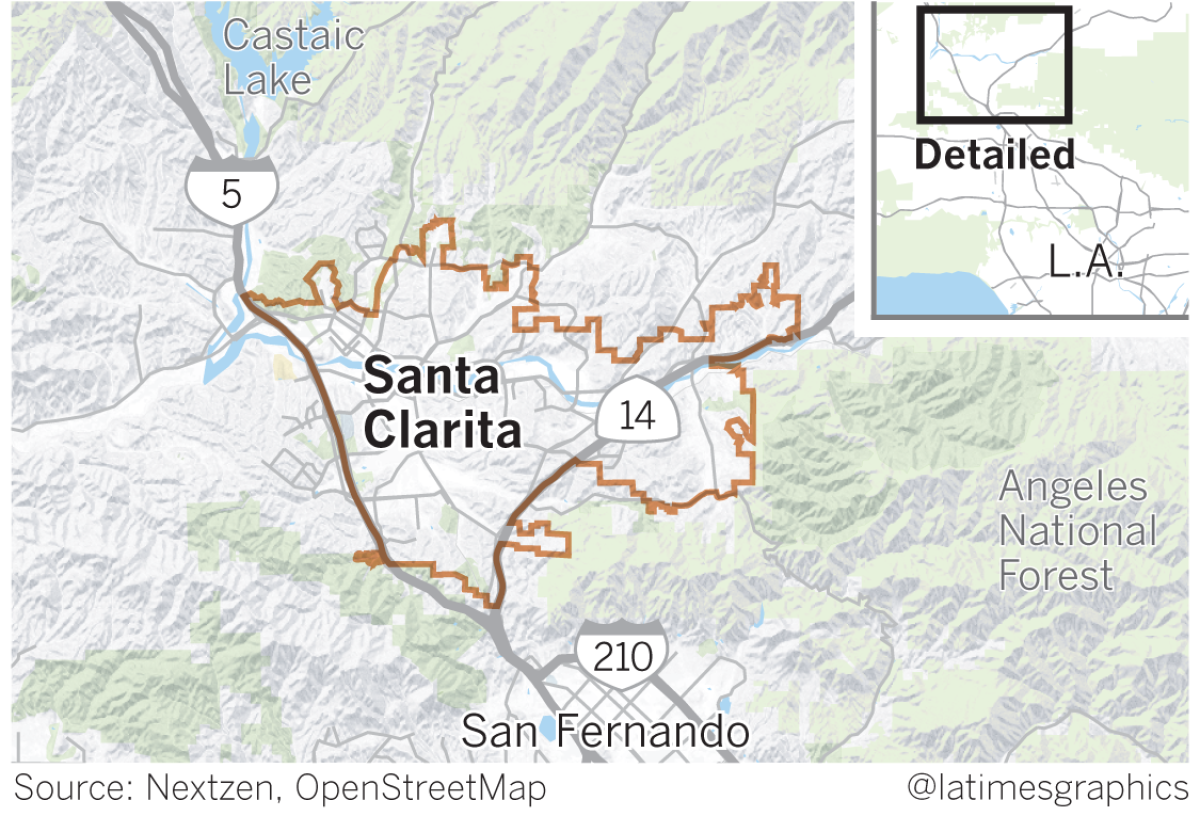
Neighborhood highlights
The Wild West: Many remnants of Santa Clarita’s pioneer past remain, including the Saugus Cafe (the oldest restaurant in Los Angeles County), the Saugus Train Depot and Old Town Newhall.
My name is Ozymandias: The shattered remains of the Saint Francis Dam, which failed in 1928, killing 450 people, are a grim reminder of the price of civil-engineering hubris.
Roller coaster heaven: Santa Clarita is the home of Six Flags Magic Mountain, the largest collection of roller coasters in the world, at 19.
Neighborhood challenges
Fire country: As climate change makes our summers drier and hotter, wildland-urban interfaces like those found in Santa Clarita will find themselves increasingly vulnerable to wildfires.
Expert insight
Laura Coffey of Keller Williams has 15 years of experience in Santa Clarita. She describes the city as clean and well-kept, complete with a beautification committee, arborist and graffiti hotline.
“Residents often say we live in a bubble,” Coffey said.
The homes are mostly tract housing, but she added that the neighborhoods are unique in that each one usually combines low, middle and high-end housing. This ensures that all economic levels and a diverse array of people are included.
“I moved to Santa Clarita back in 1997. Many of the major shopping areas were just dirt lots when I got here,” she said. Growth has bred traffic, but it’s a fair trade-off for a city with space to expand that surrounding neighbors simply don’t have.
Market snapshot
Of the five ZIP Codes in the Santa Clarita area, 91350 saw the most home transactions in October. There, based on 24 sales, the median price for single-family homes was $657,000, up 21.7% year over year, according to CoreLogic.
Report card
In the Santa Clarita boundaries, 32 schools scored above 800 in the 2013 Academic Performance Index, and five scored above 900. Those include Bridgeport Elementary at 926, Charles Helmers Elementary at 917, Golden Oak Community at 910, Valencia Valley Elementary at 905 and Meadows Elementary at 902.
Valencia High was the top-scoring high school at 855, followed by William S. Hart Senior High at 833 and Saugus High at 824.
Times staff writer Jack Flemming contributed to this report.
More to Read
Sign up for Essential California
The most important California stories and recommendations in your inbox every morning.
You may occasionally receive promotional content from the Los Angeles Times.
